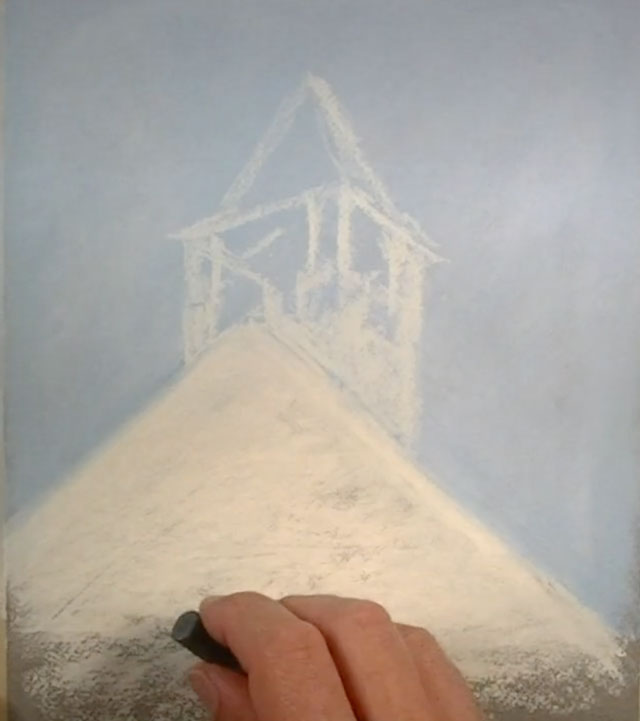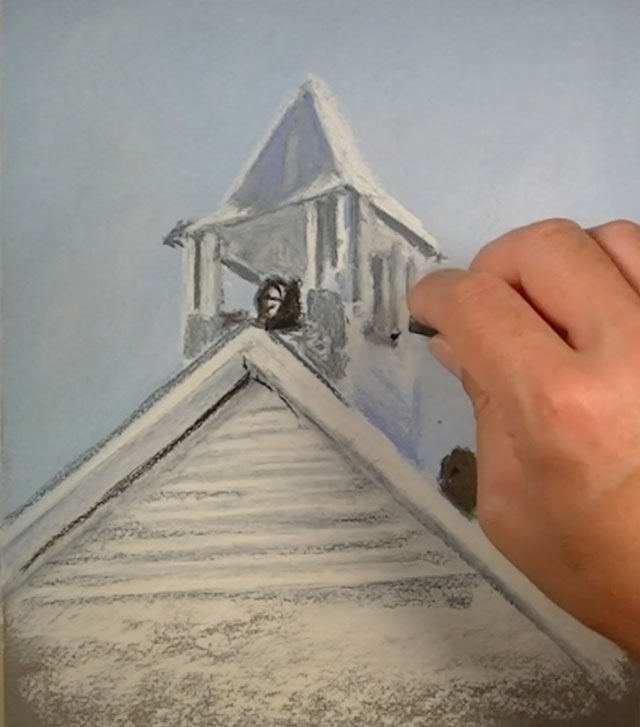
One of the advantages to working with pastels is the ability to produce paintings quickly. The characteristics of the medium allow it to be applied in large quantities and layered easily. Pastels can produce depth in color and value without a great deal of effort. Other mediums may require more time and attention to produce the same results that can be achieved with pastels in less time.

Details can be implied with pastels through relationships of color and value. The trick of course, is learning how to create these implied details in a painting. These skills are typically developed through practice and experience, but a few tips are offered below.
While speed is not always important in developing an artwork, it is a factor that many artists want to improve upon. Let's examine a few keys to painting faster with pastels.
Block in Colors First
Look for large areas of color in the reference or subject right from the start. If you can simplify the entire subject down into three or four distinct areas, you're in good shape. Don't "over-think" the colors or values that you observe. Instead, focus on putting that color down as quickly as possible to cover the surface. Remember, adjustments can always be made after these areas have been addressed.

Use the side of the pastel to fill in the areas and consider smudging with your finger to work the medium into the tooth of the paper. Add the pastel material by moving your entire arm with the shoulder, instead of using only the wrist.
Limit Your Palette
It's easy to get overwhelmed with colors that may be observed in a reference or a subject, but it's to your advantage to simplify what is observed. Consider simplifying your palette down to just a few colors, or variations of those colors. (Remember, value is different from color, you should always strive for a full range of value in your works.)

You may consider a specific color scheme in order to enhance the painting further. Color relationships that exist on the color wheel, when used in a painting can bring the painting to life. You can check out an example of this here.
Rely On Value and Color Relationships For Details
Many of us are accustomed to creating an image with a pencil or pen, which are detail-oriented tools. In painting, the details can be implied through the relationships of value and color.

These relationships often occur through contrast in value, color, texture, etc. and are created by building up layers of the medium. Often, new artists will stop building layers too soon in the painting for fear that they will make a mistake. With pastels, mistakes are easily fixed by layering.
Practice Painting Quickly
Obviously, practicing will help you work quickly. Many new artists expect results immediately. The reality is that painting is a skill that requires practice. And just like with any other skill, it requires attention and diligence to perfect.

Your Turn to Practice
You can practice painting quickly with pastels using the same reference that was used in this demonstration. Here's a link to the photo reference...Photo Reference